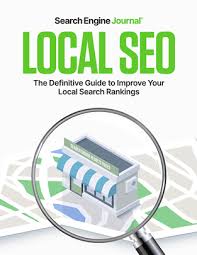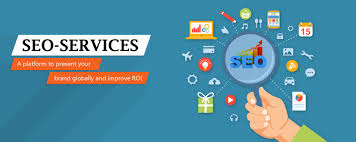The Difference Between SEO and SEM
Search Engine Optimization (SEO) and Search Engine Marketing (SEM) are two crucial strategies in the world of digital marketing. While they both aim to increase a website’s visibility on search engine results pages, they achieve this goal through different means.
SEO: Search Engine Optimization
SEO focuses on optimizing a website’s content, structure, and backlinks to improve its organic (unpaid) search engine rankings. This involves keyword research, on-page optimization, technical SEO, and link building. The goal of SEO is to increase a website’s visibility in organic search results and drive targeted traffic over time.
SEM: Search Engine Marketing
SEM, on the other hand, involves paid advertising to promote a website on search engine results pages. This includes pay-per-click (PPC) advertising campaigns, such as Google Ads. SEM allows businesses to bid on keywords related to their products or services and display ads at the top of search results pages. The goal of SEM is to drive immediate traffic to a website through paid placements.
The Relationship Between SEO and SEM
While SEO and SEM are distinct strategies, they can complement each other effectively in a digital marketing campaign. By combining both organic and paid tactics, businesses can maximize their online visibility and reach a broader audience. For example, using SEO to target long-term keywords can support SEM efforts by improving quality scores and lowering costs for PPC campaigns.
In Conclusion
Both SEO and SEM play vital roles in enhancing a website’s online presence and driving traffic. Understanding the differences between these two strategies is essential for developing a comprehensive digital marketing plan that aligns with your business goals.
Understanding SEO and SEM: Key Questions Answered
- What is the difference between SEO and SEM?
- How does SEO help improve a website’s visibility?
- What are the key components of an effective SEO strategy?
- What is SEM and how does it differ from SEO?
- How can businesses benefit from combining SEO and SEM strategies?
- Are there any tools or software recommended for managing SEO and SEM campaigns?
What is the difference between SEO and SEM?
One common query in the realm of digital marketing is the distinction between SEO (Search Engine Optimization) and SEM (Search Engine Marketing). SEO primarily focuses on enhancing a website’s organic visibility through strategies like keyword optimization, content creation, and link building to improve its ranking on search engine results pages. On the other hand, SEM involves paid advertising methods, such as PPC campaigns, to secure immediate visibility by bidding on keywords and displaying ads at the top of search results. While both SEO and SEM aim to boost a website’s online presence, they employ different approaches – with SEO emphasising organic growth and SEM relying on paid promotions for quicker results.
How does SEO help improve a website’s visibility?
Search Engine Optimization (SEO) plays a crucial role in enhancing a website’s visibility by optimizing various elements that search engines consider when ranking web pages. By conducting thorough keyword research, implementing on-page optimization techniques, improving website structure and user experience, and building high-quality backlinks, SEO helps search engines understand the relevance and authority of a website’s content. This, in turn, increases the likelihood of the website appearing higher in organic search results for relevant queries, driving targeted traffic and ultimately improving its visibility to potential users actively seeking information or solutions related to the website’s offerings.
What are the key components of an effective SEO strategy?
When considering the key components of an effective SEO strategy, several crucial elements come into play. Firstly, thorough keyword research is essential to identify relevant search terms that align with your target audience’s intent. On-page optimization, including meta tags, headings, and high-quality content creation, helps search engines understand the relevance of your website to specific queries. Technical SEO aspects such as site speed, mobile-friendliness, and structured data markup contribute to better user experience and search engine visibility. Building high-quality backlinks from authoritative websites enhances your site’s credibility and domain authority. Regular monitoring, analysis of performance metrics, and continuous adaptation based on algorithm updates are also vital for sustaining and improving SEO results over time.
What is SEM and how does it differ from SEO?
SEM, or Search Engine Marketing, is a digital marketing strategy that involves paid advertising to promote a website on search engine results pages. In contrast, SEO, or Search Engine Optimization, focuses on optimizing a website’s content and structure to improve its organic search engine rankings. The key difference between SEM and SEO lies in their approach: SEM relies on paid placements to drive immediate traffic, while SEO aims to increase a website’s visibility in organic search results over time. Understanding the distinction between SEM and SEO is crucial for businesses looking to effectively leverage both strategies to enhance their online presence and reach their target audience.
How can businesses benefit from combining SEO and SEM strategies?
Businesses can benefit significantly from combining SEO and SEM strategies in their digital marketing efforts. By integrating both organic (SEO) and paid (SEM) tactics, businesses can achieve a comprehensive approach to increasing online visibility and driving targeted traffic to their websites. SEO helps improve long-term visibility in search engine results through strategic keyword targeting and content optimization, while SEM allows for immediate visibility through paid advertising campaigns. By leveraging the strengths of both strategies, businesses can reach a wider audience, increase brand awareness, drive more qualified traffic, and ultimately improve their overall online marketing performance.
Are there any tools or software recommended for managing SEO and SEM campaigns?
When it comes to managing SEO and SEM campaigns effectively, there are several tools and software solutions recommended by digital marketing professionals. For SEO, popular tools like Moz, SEMrush, Ahrefs, and Google Analytics can help with keyword research, on-page optimization, backlink analysis, and performance tracking. These tools provide valuable insights to improve organic search rankings and enhance website visibility. On the other hand, for SEM campaigns, platforms such as Google Ads (formerly AdWords), Bing Ads, and Facebook Ads Manager are commonly used to create and monitor paid advertising campaigns across search engines and social media channels. These tools offer features like keyword bidding, ad performance tracking, audience targeting options, and budget management tools to maximise the effectiveness of SEM efforts. By leveraging these recommended tools and software solutions, businesses can streamline their SEO and SEM strategies for optimal results in the competitive digital landscape.




